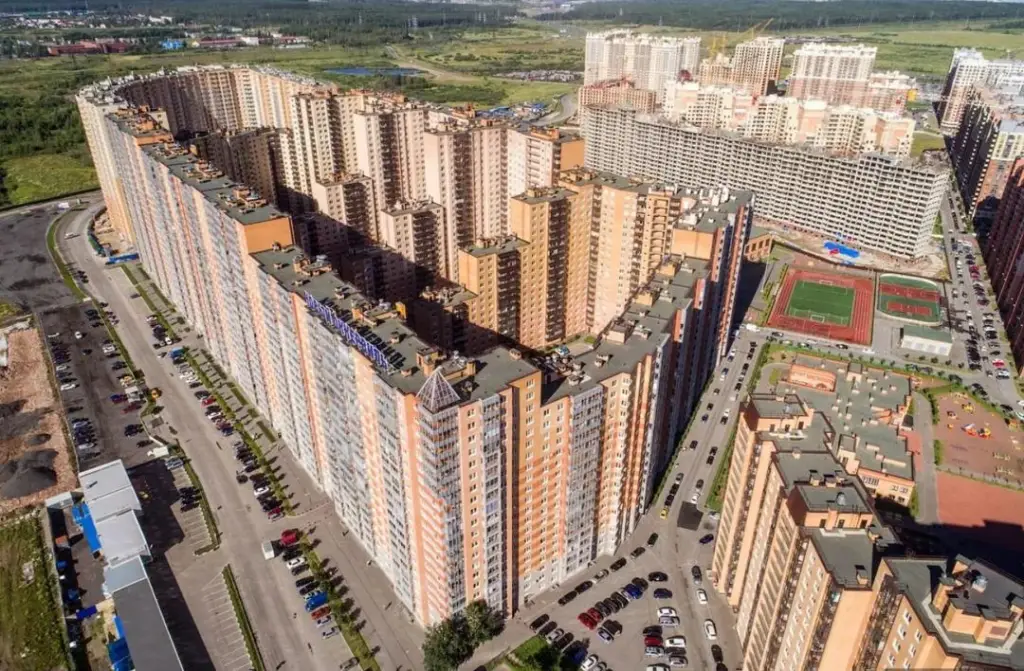In St. Petersburg, Russia, an extraordinary residential complex stands as a testament to Soviet-era urban planning and architecture. Known as the “House of Soviets” (not to be confused with the administrative building of the same name), this colossal structure is home to over 18,000 residents, making it one of the largest residential buildings in the world.

A Marvel of Soviet Urban Planning
Origins and Construction
Built during the late Soviet era, this mega-building was designed to address the housing shortages faced by the rapidly urbanizing population. Constructed in the 1970s and 1980s, the building embodies the utilitarian philosophy of Soviet architecture, prioritizing functionality and mass housing over aesthetic appeal.
Scale and Structure
- Size and Layout:
The building is a sprawling structure with over 4,000 apartments spread across multiple interconnected wings. It has been likened to a “horizontal skyscraper” due to its low-rise but extensive design. - Facilities:
To accommodate the needs of its massive population, the building includes amenities such as schools, grocery stores, a post office, and even small healthcare facilities within its premises.

Life Inside the Giant
A Miniature City
Living in this building is akin to being part of a self-contained community. With thousands of families under one roof, it creates a unique microcosm of urban life.
- Social Dynamics:
The shared corridors and communal spaces foster a sense of community among residents, though the sheer size can sometimes make it feel impersonal. - Challenges:
Maintaining such a massive building presents significant logistical challenges. Issues like waste management, repairs, and utilities require constant attention.
Architectural Significance
While the building may not win awards for beauty, it remains a fascinating example of Soviet architectural pragmatism. Its design reflects the priorities of its era: providing affordable, functional housing for the working class.
- Prefabricated Materials:
Like many Soviet-era structures, it was built using prefabricated concrete panels, a cost-effective and time-efficient construction method. - Efficiency:
The modular design allowed architects to scale up the building’s size without significantly increasing costs.
Cultural Impact
A Landmark in St. Petersburg
The building has become a local landmark, symbolizing the city’s post-war growth and the Soviet Union’s ambitious housing projects.
Popular Culture
Its sheer size and population have earned it comparisons to small towns and sparked curiosity among locals and tourists alike. The building frequently features in documentaries and discussions about Soviet urban planning.
A Glimpse into the Future
Modern Challenges
As the building ages, maintaining its infrastructure becomes increasingly difficult. Plumbing, heating, and insulation systems designed decades ago often struggle to meet modern standards.
Preservation or Renewal?
Debates continue about whether such massive housing complexes should be preserved as historical artifacts or modernized to improve living conditions.
Conclusion
The residential giant in St. Petersburg, housing over 18,000 people, is more than just a building—it’s a living piece of history. It stands as a reminder of the Soviet Union’s ambitious vision for urban housing and the challenges of managing such colossal structures. For its residents, it is both a home and a symbol of their shared past, offering a fascinating glimpse into life in one of the world’s largest residential buildings.





















